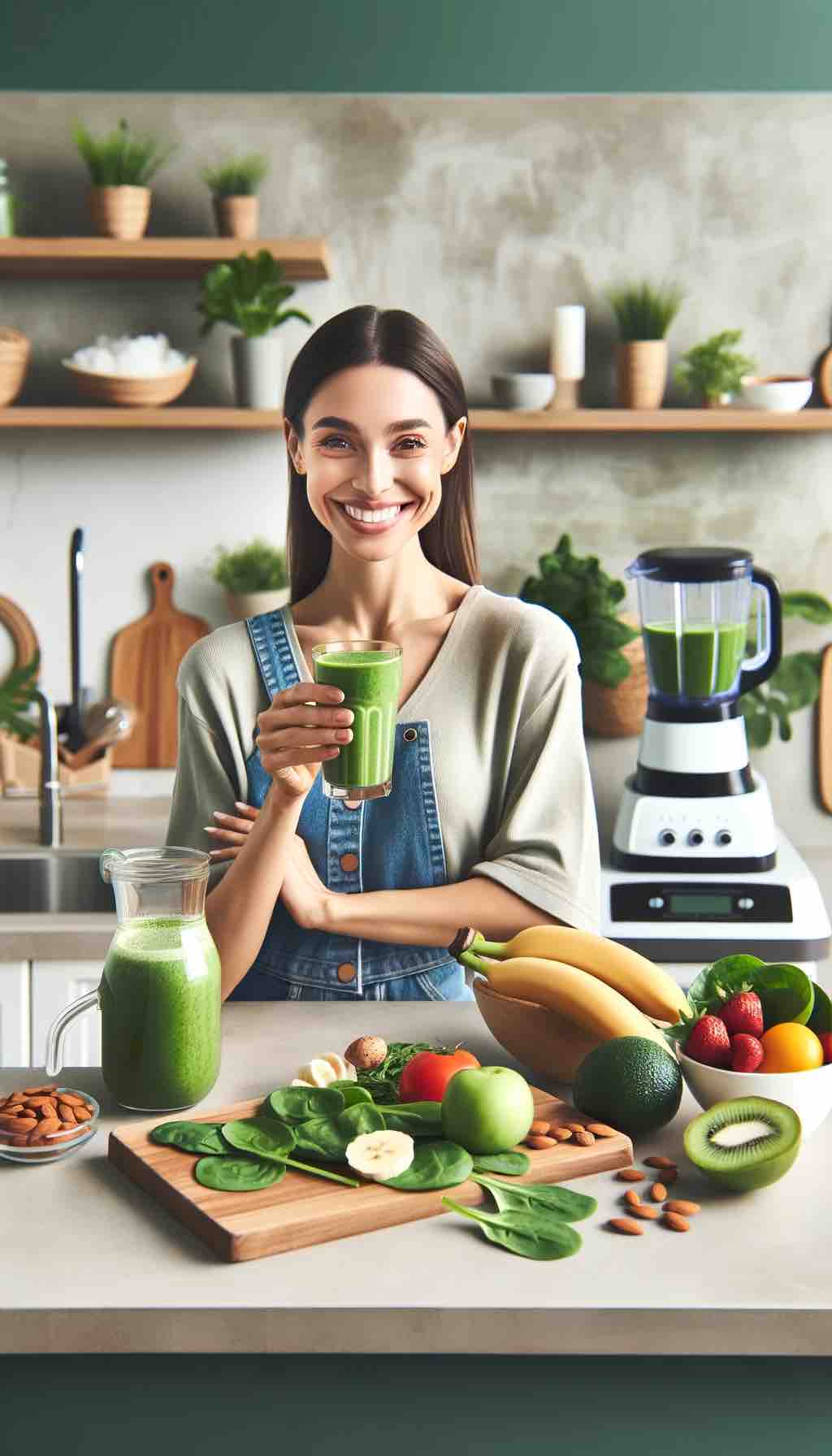
Introduction
As an expectant mother, you’re nurturing a new life within you, and that requires extra attention to your diet and energy levels. Mid-morning is often when energy dips occur, and what better way to revitalize yourself than with a nutrient-packed smoothie? In this post, we’ll explore five smoothies that combine the nutritional powerhouse of spinach with the creamy, dairy-free goodness of almond milk, ensuring that you and your baby receive essential nutrients in the most delicious way possible.
Why Spinach and Almond Milk?
Spinach is a superfood, especially beneficial during pregnancy. It’s packed with iron, crucial for preventing maternal anemia and promoting fetal development. It’s also a rich source of folate, vital for preventing birth defects. Almond milk is a wonderful alternative to dairy, especially for those with lactose intolerance. It’s often fortified with calcium and vitamin D, and its natural nuttiness complements a variety of flavors.
1. Green Almond Delight
- Ingredients: 1 cup fresh spinach, 1 ripe banana, ½ cup unsweetened almond milk, 1 tablespoon natural almond butter, ½ medium apple (preferably green for tartness).
- Preparation: Thoroughly wash the spinach. Blend it with almond milk until smooth. Add the sliced banana, almond butter, and chopped apple. Blend until the smoothie reaches a creamy consistency.
- Benefits: This smoothie combines the iron from spinach with the potassium from bananas, enhancing blood health. The apple adds a natural sweetness and fiber, aiding in digestion.
2. Berry Spinach Fusion
- Ingredients: 1 cup spinach, ½ cup mixed berries (fresh or frozen), 1 ripe banana, 1 cup unsweetened almond milk, 1 tablespoon chia seeds (soaked in water for 10 minutes).
- Preparation: Start with blending spinach and almond milk. Once smooth, add the berries, banana, and swollen chia seeds. Blend until smooth.
- Benefits: This fusion of berries introduces antioxidants for cellular health, while chia seeds add omega-3 fatty acids, crucial for the baby’s brain development and mother’s heart health.
3. Tropical Spinach Smoothie
- Ingredients: 1 cup spinach, 1 cup pineapple chunks, ½ ripe banana, 1 cup unsweetened almond milk, ½ cup mango (fresh or frozen).
- Preparation: Blend the spinach with almond milk until smooth. Then add pineapple, banana, and mango for a creamy and rich texture.
- Benefits: Pineapple and mango are high in vitamin C and fiber. They add tropical flavors and aid in iron absorption from spinach.
4. Cinnamon Spinach Oatmeal
- Ingredients: 1 cup spinach, 1 ripe banana, ½ cup gluten-free rolled oats, 1 cup unsweetened almond milk, a dash of ground cinnamon.
- Preparation: Start by blending the oats into a fine powder. Add spinach, banana, almond milk, and cinnamon. Blend until smooth and creamy.
- Benefits: Oats add a comforting texture and are a great source of fiber. Cinnamon not only enhances the flavor but also has anti-inflammatory properties and helps regulate blood sugar levels.
5. Peanut Butter Spinach Power
- Ingredients: 1 cup spinach, 1 ripe banana, 2 tablespoons natural peanut butter, 1 cup unsweetened almond milk, 1 tablespoon organic honey or maple syrup.
- Preparation: Blend spinach and almond milk first to ensure a smooth base. Add the banana, peanut butter, and honey. Blend until you reach a creamy, smooth texture.
- Benefits: Peanut butter is a good source of protein and healthy fats, providing sustained energy. The honey adds natural sweetness and antibacterial properties.
Customizing Your Smoothie
These smoothie recipes are versatile. You can add a scoop of protein powder, substitute almond milk with soy or oat milk, or add different fruits and nuts. The key is to keep it balanced and in line with your dietary needs and preferences.
The Joy of Sharing
I invite you to share your thoughts and variations on these recipes. Your experiences and ideas can inspire and help other expectant mothers looking for nutritious and delicious mid-morning options.
Conclusion
These mid-morning smoothies are more than just a treat; they are a blend of essential nutrients, tailored for the unique needs of pregnancy. They offer a perfect balance of taste and health, ensuring you and your baby are well-nourished. Enjoy these recipes and feel free to experiment with your own combinations, making each smoothie uniquely yours.
FAQs
- Can I use frozen spinach instead of fresh? Absolutely! Frozen spinach is just as nutritious as fresh spinach. Just make sure to thaw it slightly before blending for a smoother texture.
- Is it safe to have almond milk during pregnancy? Yes, almond milk is safe and a great alternative to dairy milk during pregnancy, especially if it’s fortified with calcium and vitamin D. Just ensure it’s unsweetened and free from harmful additives.
- Can these smoothies be a meal replacement? While these smoothies are nutritious, they are meant as a mid-morning boost and not a complete meal replacement. It’s important to maintain a balanced diet with whole foods throughout your pregnancy.
- How can I make these smoothies sweeter without using sugar? You can naturally sweeten your smoothies with fruits like bananas, apples, or dates. Honey or maple syrup are also healthier alternatives to sugar.
- Are these smoothies suitable for women with gestational diabetes? These smoothies, particularly those without added sweeteners, can be suitable. However, it’s essential to consult with your healthcare provider for dietary advice specific to gestational diabetes.
- Can I add protein powder to these smoothies? Yes, adding a scoop of protein powder is a great way to increase the protein content, especially beneficial during pregnancy. Opt for a natural, unsweetened variety.
- Is it okay to prepare these smoothies in advance? These smoothies are best enjoyed fresh, but you can prepare them up to 24 hours in advance. Store them in a sealed container in the refrigerator and give them a good shake before drinking.
- What can I substitute for banana in these recipes? Avocado makes a great substitute for banana, offering a creamy texture and healthy fats. You can also use mangoes or peaches for a different flavor profile.
- Can I use other types of milk instead of almond milk? Certainly! Soy, oat, or cow’s milk can be used as alternatives, depending on your dietary preferences and needs.
- Are these smoothies high in calories? These smoothies are designed to be nutrient-dense, not necessarily high in calories. The calorie content largely depends on the ingredients and portion sizes used.
Blog Tags
Pregnancy Nutrition, Healthy Smoothies, Spinach Recipes, Almond Milk, Mid-Morning Snacks, Maternal Health, Easy Recipes, Dairy-Free Alternatives, Prenatal Care, Nutrient-Rich Foods













